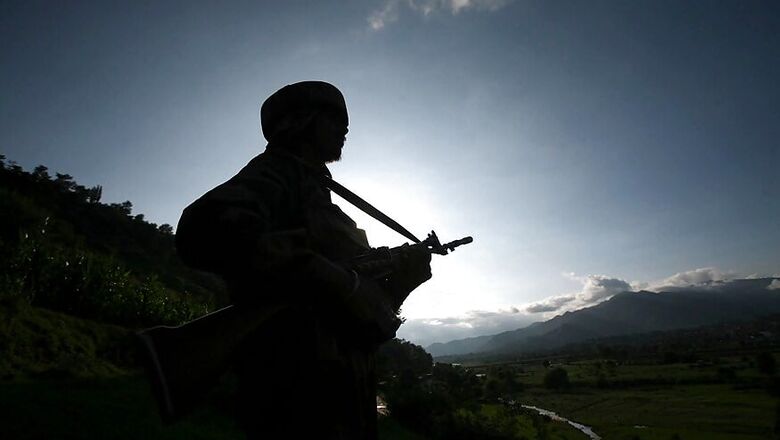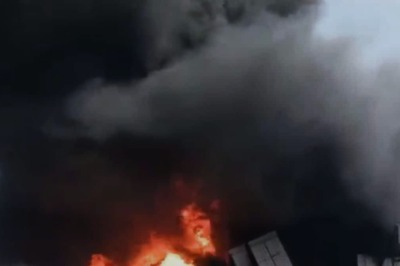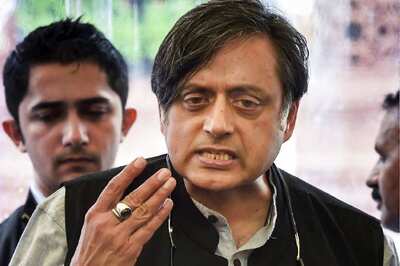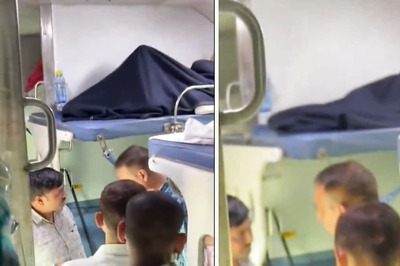
views
New Delhi: The Army has been roped in to build a foot overbridge (FOB) after 23 people were killed in a stampede in Mumbai last month. Railway Minister Piyush Goyal and Defence Minister Nirmala Sitharaman, who were in Mumbai on Tuesday, visited the site of the stampede.
Punjab Chief Minister Captain Amarinder Singh, however, was less than impressed. In a series of tweets, he implored Sitharaman not to divert defence resources to civilian jobs.
This isn’t the first time the Army has been commissioned to do a work like this. The move has raised questions over the Army’s engagement in civilian roles and the preparedness of the central and state public works departments to undertake such jobs.
Project Amar
When Punjab CM tweeted to Defence Minister, expressing his displeasure at the Army being deployed in a civilian capacity, he referenced Lt. Gen BM Kaul, who was the Chief of General Staff (CoGS) back in the late 1950s. “You’re doing what General Kaul did with the 4th Div before 1962 war with China. It will set a very bad precedent. Please avoid,” Singh wrote in his tweets. In 1959, Kaul undertook Project Amar, reportedly at the insistence of then Defence Minister VK Krishna Menon. Under Project Amar, the 4th Infantry Division of the Indian Army was engaged in the construction of 1,450 houses in the city of Ambala, Haryana. According to reports, Army Chief KS Thimayya was opposed to this. When the war with China broke out, the 4th division was asked to move to the North-Eastern Frontier Areas (NEFA). The division suffered heavy losses in the war. Critics argued this was because the troops did not have adequate time to train since they were engaged in civil construction work.
Four recent examples when Army was made to do civilian work:
High Altitude Clean-up
In September, Defence Minister Nirmala Sitharaman announced during a visit to Kasauli, Himachal Pradesh that the Indian Army would soon be cleaning up high-altitude tourist locations in Jammu and Kashmir, Himachal Pradesh and Northeastern states. These regions, Sitharaman said, faced environmental threats from tourists and mountaineers who leave behind non-biodegradable waste.
Kerala Bailey Bridge
On April 3, a 50-member team of the Army attached to the 14 Madras Engineering Group started constructing a steel bridge in Kerala across the Kallada River at Enathu. The Army finished the job within 48 hours. Soon after this, Kerala Chief Minister Pinarayi Vijayan inaugurated the bridge. The Bailey Bridge is 58-meter long and three-meter wide and can handle one-way traffic of light motor vehicles.
Floating Bridges for Sri Sri Ravi Sankar’s Event
In 2016, Sri Sri Ravi Sankar’s Art of Living (AOL) organized a mega event on the Yamuna floodplains. Then Defence Ministry Manohar Parrikar directed the Army to construct floating bridges near the venue after Delhi Police expressed fears of a potential stampede. AOL reportedly did not have to pay anything for the pontoon bridges since the Army does not have a policy of charging fees. This not only raised questions of impropriety as the Army constructed bridges for a private event, but also raised fears that this would cause permanent damage to the Yamuna ecosystem.
Commonwealth Games FOB
In October 2010, days before New Delhi was set to host the Commonwealth Games, a suspension bridge outside the Jawaharlal Nehru Stadium, the venue of the opening and closing ceremonies, collapsed, crushing 27 workers. When crisis loomed over the games, the government called in the Army to reconstruct the bridge. The Army finished the job within six days and the bridge was ready for use.




















Comments
0 comment